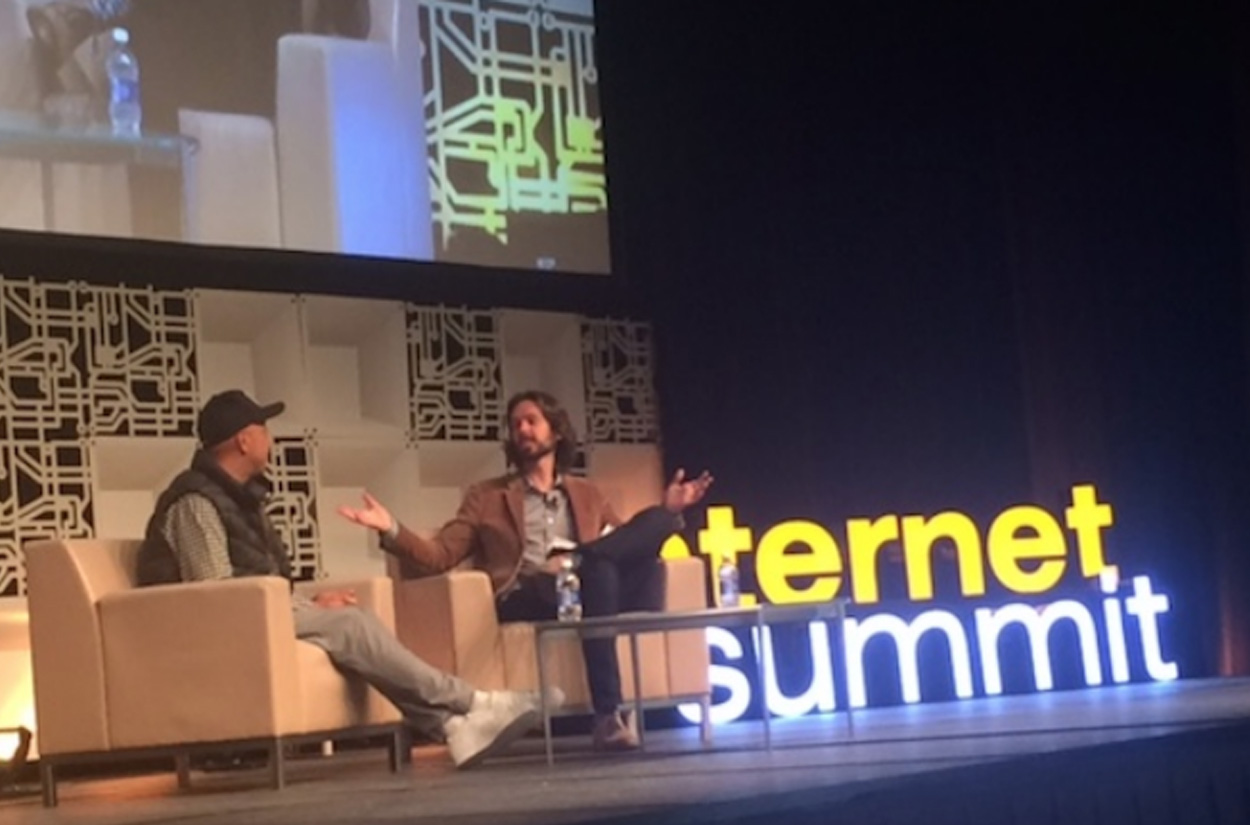
The end of 2015 is upon us and once again we’re all working to take stock of our marketing wins this year and plan out how we’ll get better in 2016.
Needless to say, moving the needle in inbound marketing gets harder every year as more competitors take on content efforts and the world of search gets infinitely more crowded.
Always looking to stay on the bleeding edge at NgageContent, just ahead of the Thanksgiving holiday a few members of our team had the chance to attend the Internet Summit, the founding event for the growing Digital Summit Series. While the event was well attended, if you missed the fun in Raleigh, fear not. Our team was there to take notes for you. Here are four interesting nuggets from the show to help you think big thoughts for your marketing plans in 2016.
1. We’re living in a two algorithm world
Big thoughts from: Rand Fishkin, founder of Moz @randfish
As the study of search algorithms becomes more and more important to the content and digital world, Rand is firmly planted as the chief search scientist. Always entertaining and engaging, he took the Raleigh crowd through an afternoon keynote that blended two worlds: The search engine optimization playbook many of us follow today and the future of Google, which is driven by machine learning. As Google puts its algorithm through constant automated updates, there is a new way to think about search: How does it solve searcher outputs?
We’ve traditionally thought of search in classic SEO terms of ranking inputs like keyword targeting and snippet optimization. While those things will still matter going forward, the new SEO rules will be about how you satisfy searchers who end up on your site. This means an increase in things like content gap fulfillment, completion of the searcher’s task (meaning their search ends on your site) and how long searchers stay on your site. So what does this mean for you? It means you have to start thinking about both feeding the traditional SEO machine and figure out how to make your reader happy with accurate, relevant information. Get ready to step your game up in 2016.
2. Make a living off cold turkey
Big thoughts from: Jason Miller (Sr. Manager, Content Marketing, LinkedIn) @JasonMillerCA
It was a happy accident for Jason that during his pre-Thanksgiving week keynote one of the central images of his presentation was a turkey.
Mixed in with many music references that tickled the rock fans in the crowd (and left a few non-concert goers next to me utterly confused) was Jason’s ongoing theme of building quarterly “rock” content. With the goal of hitting one home run per quarter, rock content is the anchor around which your content strategy is built. It is that long, gated piece focused on a relevant conversation in your industry that you want to own. LinkedIn’s team does this with quarterly eBooks that help drive content for the rest of the quarter. How do they do that? They treat the large content piece like the Thanksgiving turkey. They break out little chunks, big chunks, the graphics and more into multiple pieces that support and drive traffic back to the rock piece.
3. No one cares about your content…yet
Big thoughts from: Cliff Seal, UX Designer, Salesforce @cliffseal
Cliff’s presentation was one of my favorites from the moment I first saw what it was called (repeated in the summary sentence above). But he really hit home with one thought on how to make content marketing authentic and interesting to your readers: Think about how you choose your friends. It is very likely that your friends are not all from the same place or background as you. You are not just similar data points around age, demographics, etc. Instead, friends are made through conversations that matter — and often these conversations are ones where you share similar goals and values.
This is how we should all think about our online content: content engagement is like a conversation and, as Cliff’s presentation pointed out, personality is the clincher that helps make new friends and audiences alike. We have very little time to get our point across (Cliff referenced a Nature.com piece that showed web users make a first impression within 50 milliseconds), and anything that comes across as inauthentic will quickly shut down the conversation and leave you with content no one cares about.
4. Someone needs to understand all those buzzwords
Big thoughts from: Scott McNabb, Vice President of Enterprise Sales, Oracle Marketing Cloud @ScottMcNabb
Our team at NgageContent is always wary of buzzwords. Words like content marketing, which once seemed so important, get sucked up into jargon machines and end up becoming meaningless. Needless to say, when a few members of our team attended Scott’s presentation, entitled “It’s About Time: The Amazing Convergence of MarTech and Adtech” we were ready to be awash in members-only marketing speak. Instead, we were treated to an inside look at the future of the unified sales funnel.
For the purposes of this blog we’ll skip all the tech that is converging and focus on the more fundamental question Scott asked all the marketing teams in the room: As the strategy, technology and energy required to follow a prospect across multiple channels grows, does your team have the skills and discipline needed? Forget about knowing all the buzzwords, does your team understand what it takes to identify an online visitor and act on the information gathered? That’s a very simple and challenging question for most, and it’s one that must be answered to put together your future marketing plan.

